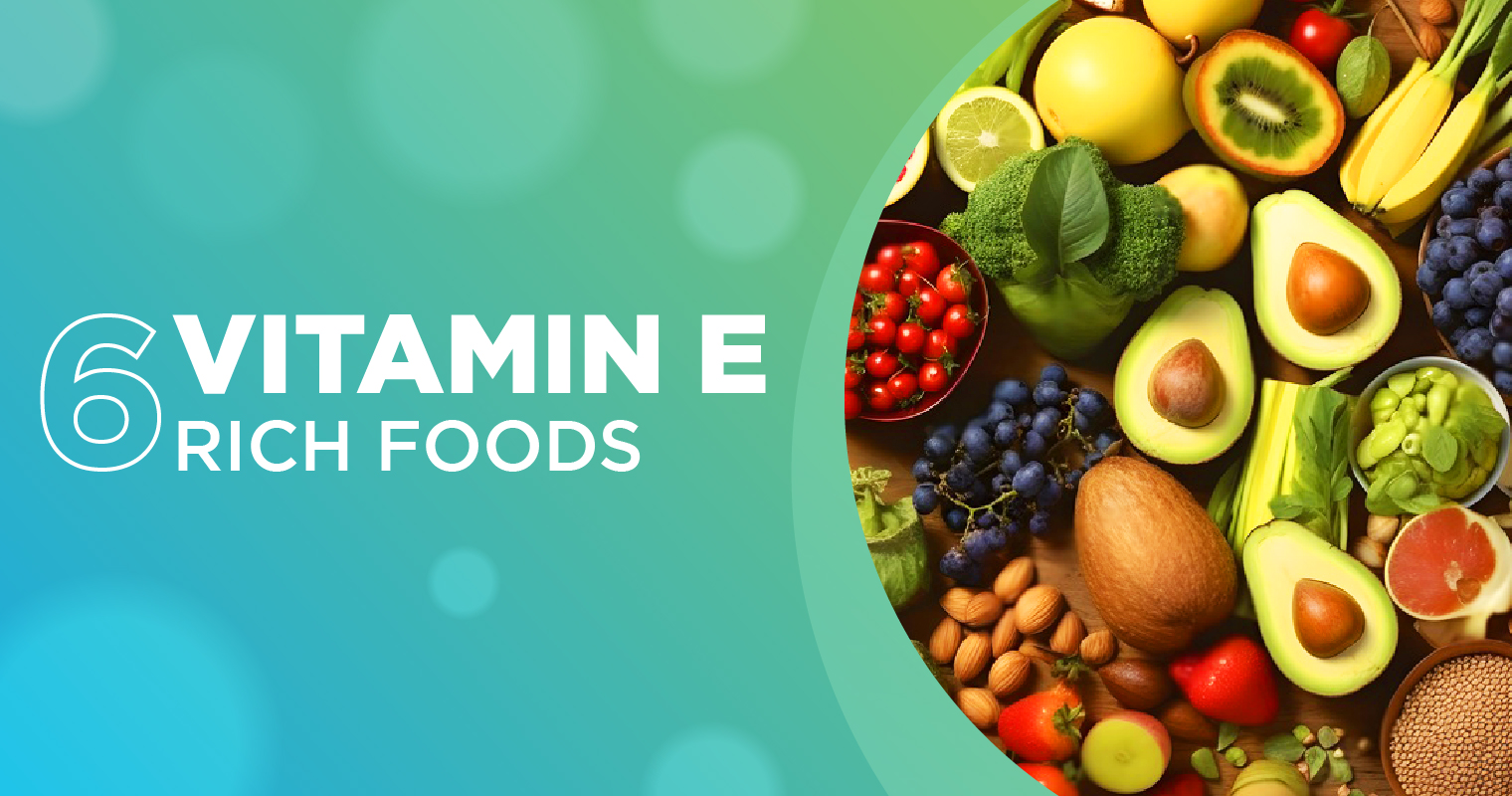The importance of a balanced diet for preserving good health cannot be emphasized enough. Making sure that vital nutritional needs are addressed might occasionally be a challenge for vegetarians.
In the pursuit of optimal health, our dietary choices play a pivotal role. For vegetarians, the quest for essential nutrients is a conscious and meaningful one. In this blog, let’s look at how vegetarians can optimize Vitamin E food sources.
What is Vitamin E?
Vitamin E, the well-known nutrient, is a group of eight fat-soluble compounds with distinctive antioxidant properties, 4 tocopherols (alpha, beta, delta, and gamma) and 4 tocotrienols (also alpha, beta, delta, and gamma).
Vitamin E acts as an antioxidant in the body. These antioxidants help counteract the damaging effects of free radicals, which are unstable molecules that can harm cells and contribute to various health issues.[1] Including Vitamin E-rich foods in your vegetarian diet can provide a natural defense against oxidative stress and promote overall health.
1. Tocotrienols from Annatto Plant
For vegetarians seeking an optimal Vitamin E source, Annatto-derived tocotrienols stand out. Unlike some other sources, annatto provides tocotrienols without the interference of alpha-tocopherols, enhancing their potency.
Dr. Barrie Tan, a pioneering expert, discovered the three primary sources of tocotrienols: rice, palm, and annatto. Annatto-derived tocotrienols stand out as the most potent vitamin E source.
For optimal potency, vitamin E should contain less than 10% alpha-tocopherol, a balance naturally present in the annatto plant. Unlike other sources, annatto provides tocotrienols without the interference of alpha-tocopherols.[2]
2. Vitamin E Rich Foods: Almonds and Hazelnuts
Almonds and hazelnuts, among the most popular nuts, are brimming with Vitamin E. A mere ounce of almonds offers approximately 48% of your daily value of Vitamin E. These nuts make for a convenient and satisfying snack that also contributes to your nutrient intake.
3. Vitamin E Rich Foods: Red Sweet Pepper
Red sweet peppers are not only a vibrant addition to your meals but also a great source of Vitamin E. Incorporating these peppers into your dishes can provide a substantial 13% of your daily Vitamin E needs.[3] They’re not only delicious, but they also add a pop of color to your plate.
4. Leafy Greens: Turnip and Mustard Greens
Leafy greens like turnips and mustard greens offer a double punch of essential nutrients, including Vitamin E. Raw turnip greens, for instance, provide about 10% of your daily Vitamin E requirement per serving. These greens are not only packed with antioxidants but also add a refreshing crunch to your salads.
5. Vitamin E Rich Fruits: Kiwifruit and Mango
Fruits can be a delightful source of Vitamin E, although they might not have as high a concentration as nuts and seeds. Nevertheless, fruits like kiwifruit and mango can contribute to your daily intake. A medium kiwifruit provides around 7% of your Vitamin E needs, making it a refreshing and tangy addition to your diet.[4]
6. Avocado: A Creamy Source of Goodness
Avocado, a beloved fruit, is not only rich in healthy fats but also a fantastic source of Vitamin E. Half an avocado provides around 14% of your daily recommended intake of this essential nutrient. Whether spread on toast or added to salads, avocados are a versatile and delicious way to boost your Vitamin E intake.
Conclusion
Including foods high in vitamin E in your vegetarian diet is a significant step in giving your body the natural nourishment it needs. Your daily intake of vitamin E may be increased by eating avocado, almonds, red sweet peppers, leafy greens, and fruits like kiwifruit and mango.
To maximize absorption, couple these meals with healthy fats, and keep in mind the possible advantages of tocotrienols from sources like annatto.[5] By adopting these nutrient-dense options, you’ll not only shield your cells from oxidative stress but also support your general health and well-being in the healthiest way imaginable.
References
- Niki E, Noguchi N, Tsuchihashi H, Gotoh N. Interaction among vitamin C, vitamin E, and beta-carotene. Am J Clin Nutr. 1995 Dec;62(6 Suppl):1322S-1326S. doi: 10.1093/ajcn/62.6.1322S. PMID: 7495227.
- Barba FJ, Esteve MJ, Frigola A. Impact of high-pressure processing on vitamin E (α-, γ-, and δ-tocopherol), vitamin D (cholecalciferol and ergocalciferol), and fatty acid profiles in liquid foods. J Agric Food Chem. 2012 Apr 11;60(14):3763-8. doi: 10.1021/jf205355h. Epub 2012 Apr 2. PMID: 22440111.
- Chatrabnous, Najme, et al. “Preserving quality of fresh walnuts using plant extracts.” LWT 91 (2018): 1-7.
- Assmann, Gerd, et al. “Coronary heart disease: reducing the risk: a worldwide view.” Circulation 100.18 (1999): 1930-1938.
- Dr. Eric Berg DC, “The Highest Vitamin E Food

